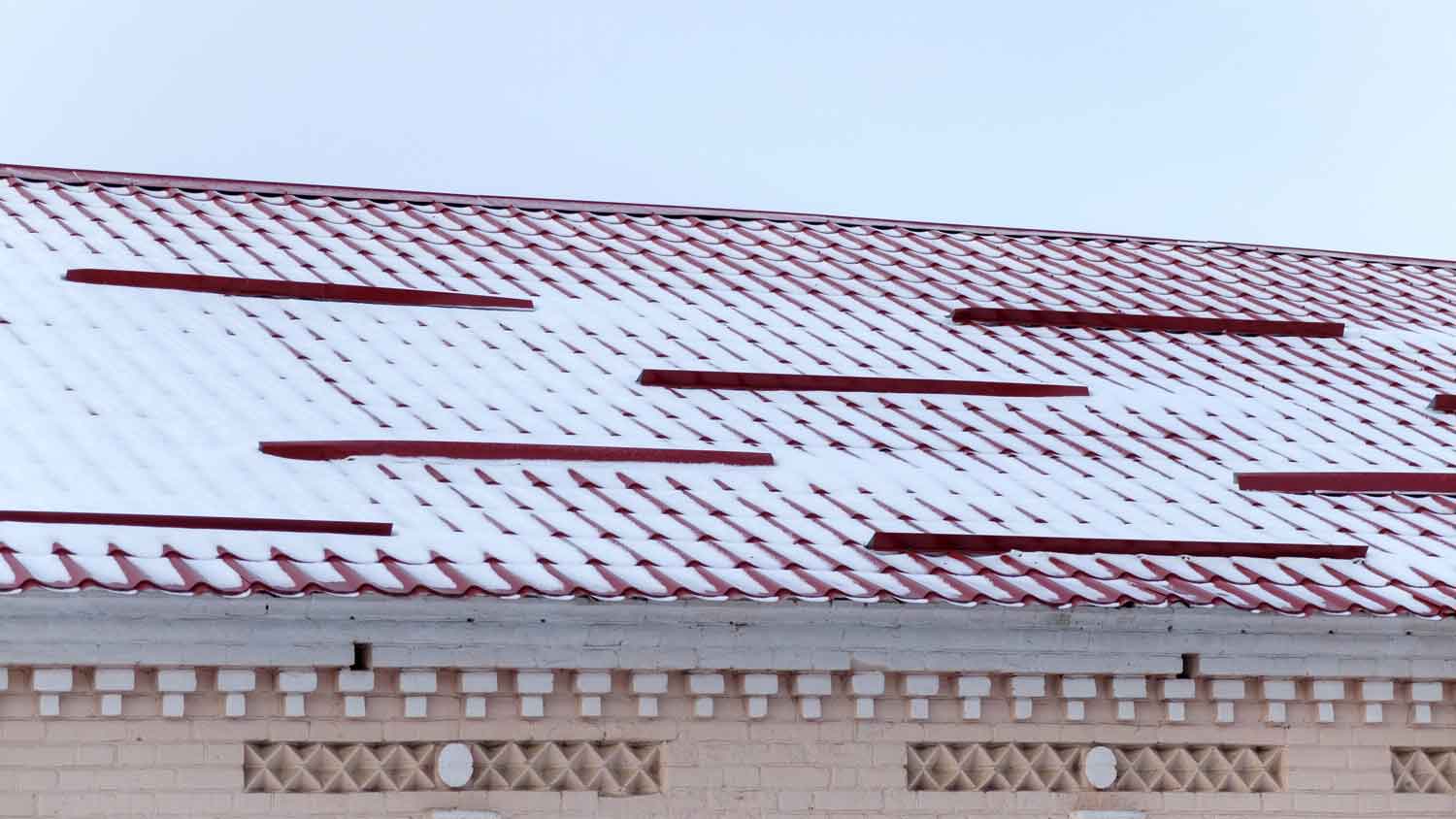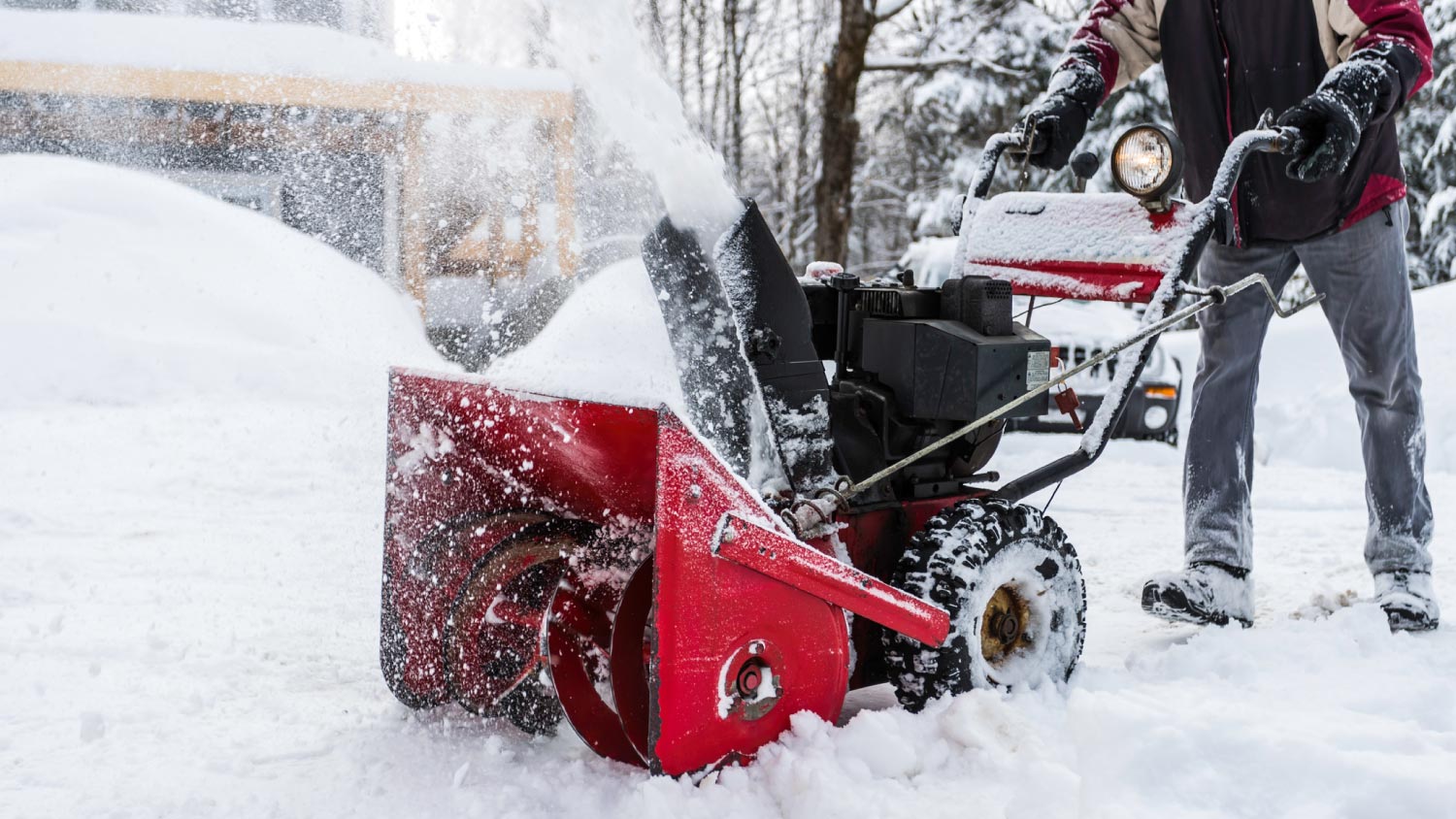
Discover the cost to install snow guards. Learn about average prices, key cost factors, and tips to save on your snow guard installation project.
The average snow removal cost is $123 per visit, with most homeowners paying between $50 to $202, depending on property size, snow depth, and service type.


Snow removal cost depends on property size, snow depth, and service choice, such as per visit or seasonal contracts.
Key cost factors include the type of equipment used, the number of visits required, and any add-ons like de-icing per square foot.
DIY snow removal requires tools like shovels, snow blowers, and de-icing material, which can add $20 to $1,200.
For one-time jobs, a tip of $10 to $20 is common and should be factored into the overall cost.
Ask about extra charges for emergency requests or heavy snowfall to avoid surprises on your bill.
This article was created using automation technology and thoroughly fact-checked and edited by an Angi Editor in accordance with our AI policy.
Snow removal cost averages $123 per visit, with a range from $50 to $202, depending on the size of your driveway, the amount of snowfall, and the type of service. Homeowners may pay per visit, per season, or by square footage, with additional charges for sidewalks or special requests.
In this guide, we’ll help you understand what drives snow removal costs, what to expect for ongoing and add-on services, and how to decide between DIY or hiring a professional. Labor costs often range from $25 to $75 per hour, and some services charge $0.10 to $0.25 per square foot.
Many factors influence snow removal cost, from the type of service to the materials and labor involved. Let’s break down each key area so you can make informed choices for your property.
Snow removal services offer several pricing models. You might pay per visit, per hour, per event (for a specific snowstorm), by the inch of snow, or secure a seasonal contract for regular service all winter. Each model affects your total snow removal cost differently.
For example, per-visit pricing is straightforward but can add up in snowy regions. Seasonal contracts cost more upfront but save money if you need frequent clearing. Residential snow removal covers driveways and walkways, while commercial services often include parking lots and larger areas, leading to higher costs.
| Service Type | Cost Range | What’s Included |
|---|---|---|
| Per visit | $40–$100 | Driveway and front walkway |
| Per hour | $25–$75 | Labor for any area requested |
| Per event | $75–$200 | Full property after major snowfall |
| Per inch | $10–$30 | Additional fee per inch above base |
| Seasonal contract | $300–$700 | Unlimited visits all season |
| Commercial contract | $500–$2,000 | Large lots, walkways, access roads |
The size of the area to be cleared is a major cost driver. Snow removal cost increases with larger driveways, longer walkways, or parking areas. Services are often measured by square footage, linear feet, or the number of cars a driveway fits.
For example, a single-car driveway costs far less to clear than a four-car driveway or a long private road. Here’s a look at costs by property size:
| Area Size | Average Cost Per Visit | Average Seasonal Cost |
|---|---|---|
| Small (single-car drive) | $40–$75 | $300–$400 |
| Medium (two-car drive) | $75–$125 | $400–$600 |
| Large (four-car drive) | $125–$250 | $600–$1,000 |
| Parking lot (commercial) | $200–$400 | $1,000–$2,000 |
Materials used for snow and ice control also impact snow removal cost. Standard rock salt is the most common and affordable, but eco-friendly or pet-safe de-icers cost more. Sand is sometimes used for traction on icy surfaces.
Your material choice affects both upfront and ongoing costs, especially if you need repeated applications after each snowstorm.
| Material Type | Average Cost (Per Application) | Pros/Cons |
|---|---|---|
| Rock salt | $10–$25 | Affordable, harsh on plants |
| Calcium chloride | $20–$40 | Effective at low temps, pricier |
| Sand | $5–$15 | Adds traction, no melting |
| Eco-friendly blend | $25–$50 | Safer for pets, higher upfront |
| Pet-safe de-icer | $20–$40 | Non-toxic, less effective at times |
Snow removal professionals include independent contractors, landscaping companies, and specialized snow services. Labor rates can be charged per hour, per visit, or by contract.
Rates vary based on urgency (such as same-day service), time of day, regional wages, and the experience level of the crew. Market demand during major storms can drive up prices. Labor often includes a team with plows, blowers, and insurance, ensuring your property is cleared safely and efficiently.
Preparation before snow removal can add to your total cost. This includes marking driveways, moving vehicles, or pre-treating surfaces with salt or de-icer. Emergency or last-minute requests often come with additional fees.
Accessibility issues, like steep driveways or obstacles, can require extra labor or equipment, raising your snow removal cost. Clearing a path for equipment or shoveling tight spaces takes more time and effort.
Tipping for snow removal is not required, but it’s appreciated, especially after a tough job or for excellent service. For one-time jobs, a tip of $10 to $20 is common. For seasonal contracts, a tip of $20 to $50 at the end of the season is a thoughtful gesture. Tipping is more expected during heavy snowfall or for services completed during holidays.
Other factors may influence your snow removal cost:
Demolition: Removing old snow barriers or damaged structures adds to the bill.
Post-construction cleanup: Clearing leftover debris after heavy snow or property work.
Permits: Some municipalities require permits for large-scale snow removal or offsite dumping.
Foundation: Protecting driveways and landscaping from plow damage may require repairs or special equipment.
Finishing: Surface treatments, like sealing or minor repairs, after snow removal.
Systems: Installing or upgrading heated driveways increases upfront costs but reduces ongoing labor.
Additional features: Adding snow fences, privacy hedges, or extra lighting for winter safety.
Decorative add-ons: Custom snow removal patterns or colored de-icers, though rare, will cost more.
Snow removal is not always a one-time expense. Ongoing costs can add up, especially in areas with frequent or heavy snowfall.
If you remove snow yourself, you’ll need to maintain equipment like shovels, snow blowers, or plows. Expect to spend on tune-ups, blade replacements, and fuel. Homeowners with service contracts pay regular fees, while all homeowners need to replenish de-icing materials throughout the season. Preventative maintenance—like sealing driveways—can help avoid costly damage from snow and ice.
Operating costs include fuel or electricity for snow blowers and plows, plus the expense of storing and maintaining your equipment. If you have a heated driveway, you’ll see higher winter energy bills. Some snow removal services also offer subscription or retainer fees for priority or guaranteed service after each storm.
Snow removal can sometimes damage property. Cracked driveways, damaged landscaping, or broken curbs are common issues. Repair costs for snow blowers or plow blades also add up, especially after heavy use. Fixing damage from improper removal—such as scratched surfaces or broken fences—should be factored into your annual snow removal cost.
Snow removal services carry liability insurance to cover property damage or injuries. If you handle snow removal yourself, consider updating your homeowner’s insurance to cover accidents or equipment damage. Additional coverage may be needed if you hire independent contractors or if snow removal is part of a rental property or home business.
Deciding between DIY snow removal and hiring a professional affects your overall costs and the safety of your property.
DIY snow removal involves purchasing or renting tools like shovels ($20 to $50), snow blowers ($300 to $1,200), and de-icing materials. Maintenance, repairs, and storage also contribute to the total expense. While you save on labor, DIY snow removal is time-consuming and physically demanding, especially after heavy snowfall.
Hiring a local snow removal pro means paying for their labor, equipment, and expertise. You avoid the risk of injury and ensure timely, thorough clearing, but you pay more per visit or season.
DIY is best for smaller properties, lighter snow, or if you’re physically able and already own equipment. Hiring a pro is safer for large areas, heavy snowfall, or if you want to avoid the physical strain.
Many homeowners need more than basic driveway clearing. Add-ons can increase your snow removal cost but often improve safety and convenience. Common options include:
Roof snow removal and ice dam prevention to protect your home from leaks or collapse
De-icing walkways, steps, and driveways for extra traction and safety
Clearing sidewalks, patios, decks, or private roads beyond the driveway
Emergency or after-hours snow removal when storms hit unexpectedly
Priority or same-day service upgrades for faster response
Heated driveway installation, which can cost $6,000 to $12,000 but reduces ongoing labor
Snow hauling or offsite disposal when piles get too large
Eco-friendly or pet-safe de-icing treatments for sensitive areas
Bundled services, such as snow removal plus salting or sanding, for convenience and potential savings
Snow removal costs can add up quickly, especially during harsh winters. Here are ways to keep expenses in check:
Bundle snow removal with other seasonal services for discounts.
Schedule services early or sign seasonal contracts for lower rates.
Maintain clear access to driveways and walkways to reduce labor time.
Use budget-friendly materials or eco-friendly alternatives.
Invest in proper equipment for DIY to minimize recurring costs.
Compare multiple quotes from local snow removal pros.
Home is the most important place on earth, which is why Angi has helped more than 150 million homeowners transform their houses into homes they adore. To help homeowners with their next project, Angi provides readers with the most accurate cost data and upholds strict editorial standards. We extensively research project costs to develop the pricing data you see, so you can make the best decisions for you and your home. We rely on reputable sources, including the U.S. Bureau of Labor Statistics, academic journals, market studies, and interviews with industry experts—all to ensure our prices reflect real-world projects.
Want to help us improve our cost data? Send us a recent project quote to [email protected]. Quotes and personal information will not be shared publicly.
From average costs to expert advice, get all the answers you need to get your job done.

Discover the cost to install snow guards. Learn about average prices, key cost factors, and tips to save on your snow guard installation project.

Winter storms and blizzards are no joke, even if you are relatively snug at home. Follow these tips to survive and thrive during brutal weather events.

There are several ways to melt ice on driveways, including with and without salt. Read this tutorial on how to melt ice on driveways to get started.

Snow throwers and snow blowers are often named interchangeably, but they aren’t the same. Learn the main differences between a snow thrower vs. snow blower.

Clearing snow from patios, walkways, and driveways can be a daunting task. Try these top snow removal tips to simplify the process and make your life easier.

Nothing ruins a good deck like ample and consistent build-up of snow and ice. Whether your outdoor deck features wood, composite material, or even PVC, here are steps to take to keep it safe and damage-free during those nasty winter months.